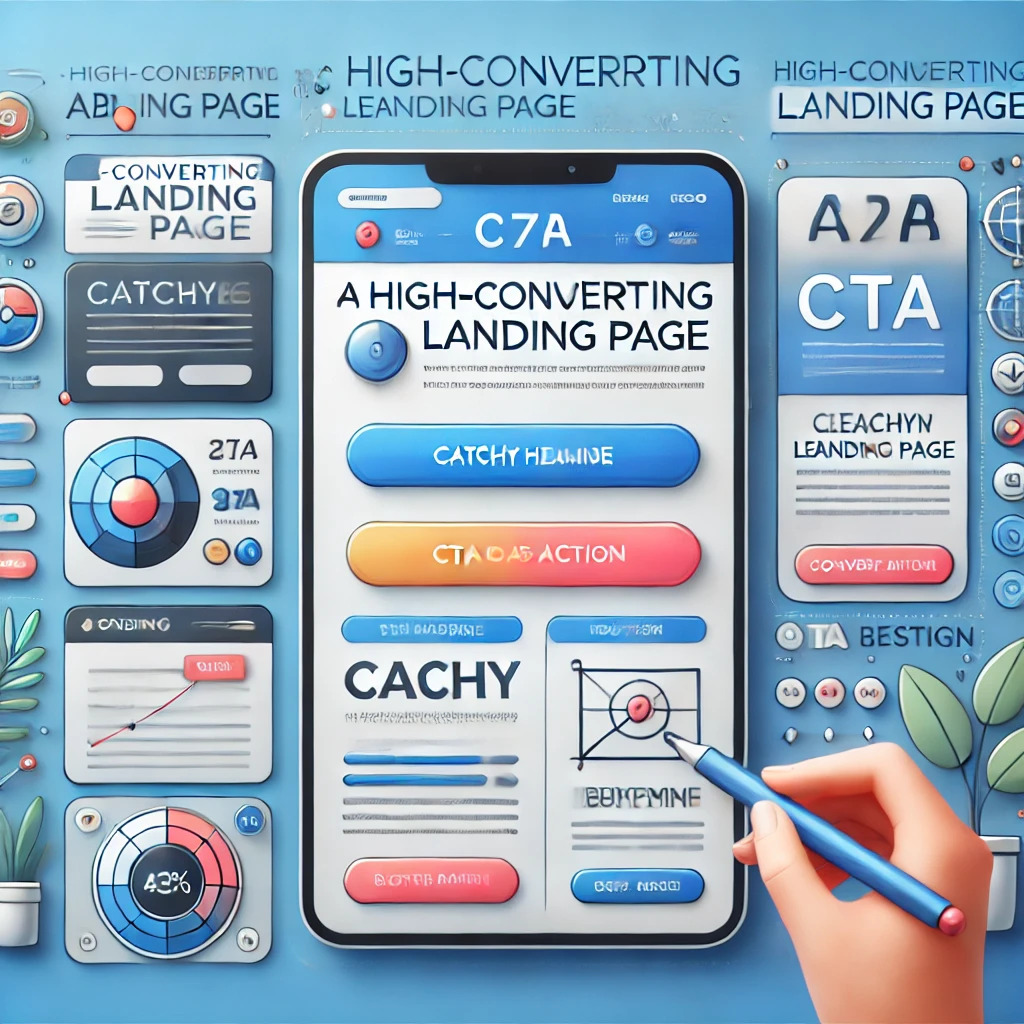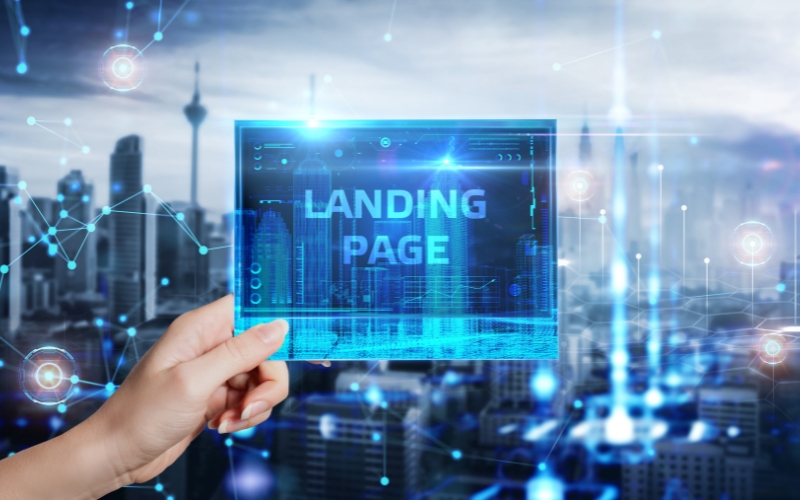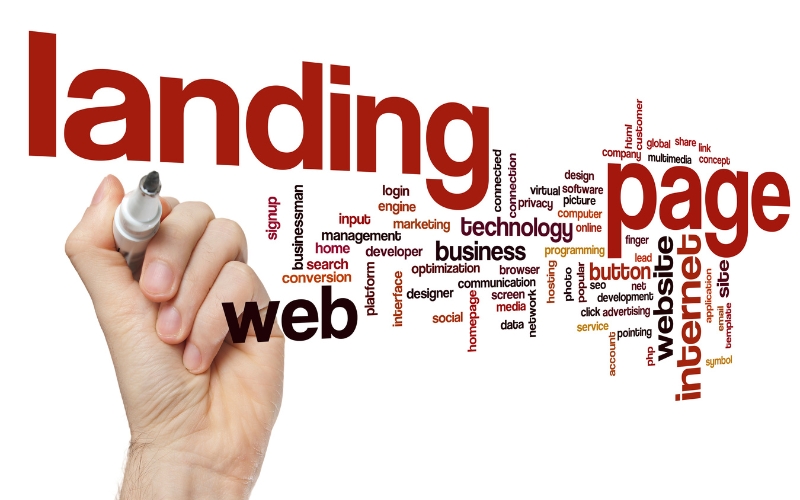
In the competitive world of digital marketing, landing page optimization plays a crucial role in driving conversions. A landing page serves as the first interaction point between potential customers and your brand, making it essential to ensure that this page is optimized for maximum impact. Whether you’re promoting a product, service, or event, understanding the role of landing page optimization is key to turning casual visitors into loyal customers. This article will explore how optimizing your landing page can significantly boost conversions and maximize the effectiveness of your marketing campaigns.
Understanding the Role of Landing Pages in Conversion Optimization

Landing page optimization plays a pivotal role in any digital marketing strategy. A landing page is where potential customers “land” after clicking on a link from an ad, email, or search result. It is designed with one primary goal: to convert visitors into leads or customers. Whether you’re promoting a product, service, or event, the effectiveness of your landing page directly impacts your conversion rates.
The importance of landing pages lies in their ability to guide visitors toward a specific action. Unlike other pages on a website that might serve multiple purposes, landing pages are laser-focused. They typically have a single call to action (CTA) such as “Buy Now,” “Download,” or “Subscribe.” This targeted approach eliminates distractions and encourages users to complete a desired action. When optimized properly, landing pages can significantly improve your conversion rates and ensure you make the most out of your website traffic.
Landing page optimization is the process of fine-tuning every element of the page to ensure it maximizes its conversion potential. This involves tweaking the copy, design, user experience, and technical aspects. For example, headlines must immediately capture attention, while the body copy should clearly articulate the value proposition. Strong, visible CTAs guide users toward their next steps. The layout, colors, and images also need to be carefully selected to align with user expectations and provide a seamless experience.
An optimized landing page creates a positive user experience that builds trust and motivates action. If a page is cluttered or confusing, visitors are likely to bounce before taking the intended action. For example, if a landing page loads too slowly or is not mobile-friendly, users may leave in frustration, reducing the chances of conversion. Therefore, optimizing the landing page’s design and functionality is just as important as its content.
Another crucial factor is A/B testing, an essential component of landing page optimization. By testing different versions of your landing page (e.g., changing the color of the CTA button or the headline wording), you can gather valuable data that will inform future design decisions. This data-driven approach ensures continuous improvement, allowing you to refine your page to boost conversions steadily.
Key Elements of a High-Converting Landing Page

Landing page optimization involves fine-tuning several key elements to ensure maximum conversion rates. A high-converting landing page isn’t just about having a visually appealing design—it requires strategic placement and optimization of critical components that encourage visitors to take the desired action. Here are the essential elements that play a significant role in landing page optimization:
- Headline
The headline is the first thing visitors see when they land on your page, so it must grab their attention immediately. A compelling headline should clearly state the benefit or value proposition that the user will receive. Keep it concise, specific, and relevant to the visitor’s intent. Strong headlines can dramatically increase engagement and form the foundation for successful landing page optimization. - Copy
The body copy should expand on the headline by further explaining the offer. It should be clear, benefit-focused, and answer the visitor’s main questions. Avoid long paragraphs; instead, use short, easy-to-scan sentences. Highlight the key benefits of your offer and why it matters to the user. Effective copywriting can make or break a landing page, so ensure the message resonates with the visitor and builds trust. - Images or Visuals
Including high-quality images or visuals that complement your message can enhance engagement and help establish credibility. Whether it’s product images, happy customers, or infographics, images should support your offer’s message without distracting from the page’s primary goal. Ensure that visuals are optimized for quick loading, as slow images can hurt the landing page optimization process by causing high bounce rates. - Call-to-Action (CTA)
The call-to-action is arguably the most important element of your landing page. This is where visitors decide whether or not to take the next step, such as subscribing to a newsletter, making a purchase, or requesting a demo. Your CTA should be clear, action-oriented, and placed prominently on the page. Use contrasting colors, compelling copy, and make the CTA button large enough to stand out without overwhelming the design. - Form Placement
Forms are an essential part of landing page optimization, particularly when your goal is lead generation. Keep the form simple and request only essential information. Long forms can discourage users from completing them, so limit fields to what’s necessary for your business goals. Place the form near the top of the page or after you’ve provided enough value to convince the user to fill it out.
Incorporating these key elements into your landing page design ensures it is optimized for conversions. Each component should be carefully crafted to guide the user smoothly from landing to conversion. By aligning these elements with the user’s needs and expectations, you can significantly improve your landing page’s performance.
User Experience (UX) Best Practices for Landing Page Design

When it comes to landing page optimization, user experience (UX) is one of the most critical factors influencing conversion rates. A well-designed landing page that prioritizes UX can significantly improve visitor engagement and drive actions like form submissions or purchases. To achieve this, it’s important to focus on key elements such as layout, navigation, and mobile responsiveness, all of which contribute to a seamless and intuitive experience that guides users toward taking action.
- Layout and Structure
The layout of a landing page should be clear, organized, and easy to follow. A cluttered or overly complex design can overwhelm visitors and lead them to abandon the page. Prioritize simplicity in your landing page optimization efforts. Use a clean structure that directs the user’s attention to the most important elements, such as the headline, offer, and call-to-action (CTA). Make sure there is enough white space around content to avoid visual overload. Group related information together, and use headings or bullet points for easy scanning. This approach makes it easy for visitors to absorb the information and understand what action to take next. - Navigation
A landing page should minimize distractions by limiting navigation options. Too many links or buttons can pull visitors away from the primary goal. Landing page optimization should focus on guiding users toward a single, clear action. Ideally, the page should not include a navigation bar or excessive links to other parts of the website. By doing so, you remove any temptation for visitors to navigate away from the landing page, increasing the likelihood they will take the desired action. - Mobile Responsiveness
With mobile traffic steadily increasing, mobile responsiveness is essential in landing page optimization. A page that doesn’t perform well on mobile devices can frustrate users and drastically reduce conversion rates. Ensure that your landing page is fully optimized for mobile, meaning it loads quickly, has buttons and forms that are easy to click, and content that is easy to read without excessive zooming. Use a responsive design that adjusts seamlessly to any screen size. Simplify the layout for mobile users by stacking elements vertically and ensuring that your CTA is easy to access on smaller screens. - Visual Design and CTA Placement
The visual elements of your landing page should align with the overall user experience. Use contrasting colors to make the CTA button stand out, and ensure it’s placed above the fold so users don’t have to scroll too much to find it. The CTA should be easy to click and visually prominent to encourage immediate action. Additionally, consider using engaging visuals or video to demonstrate your offer or product in action.
A/B Testing and Data-Driven Approaches to Landing Page Optimization

A/B testing is one of the most powerful strategies in landing page optimization. It allows marketers to test different variations of a landing page and determine which elements drive the highest conversion rates. By experimenting with various components of a landing page, businesses can make data-driven decisions that lead to continuous improvement and better performance. A/B testing enables marketers to understand user preferences and optimize landing pages accordingly, resulting in increased engagement and conversions.
- Why A/B Testing Matters
A/B testing, also known as split testing, involves creating two versions of a landing page: the original (control) version and a modified version (variant) with slight changes. These changes could involve different headlines, call-to-action (CTA) buttons, images, or even form placements. The goal of A/B testing is to identify which version performs better in terms of conversion rates. By testing variations, marketers can uncover what resonates most with users and refine their landing page optimization efforts based on real-time data. - Key Elements to Test
There are several key elements on a landing page that can be tested to improve conversions. One of the most impactful areas is the headline. The headline is often the first thing a visitor sees, so tweaking it to better match user intent or making it more compelling can have a dramatic effect on performance. The CTA button is another crucial element. Testing different CTA copy (e.g., “Get Started” vs. “Sign Up Now”) or button colors can reveal which variations drive more clicks. Images and videos can also be tested to determine which visuals capture attention and convey the value proposition most effectively. - Data-Driven Decision Making
Data is the cornerstone of landing page optimization. When conducting A/B tests, it’s essential to gather and analyze data from the experiments. Key performance indicators (KPIs) such as click-through rates (CTR), bounce rates, and conversion rates provide valuable insights into which elements of the landing page are working and which are not. Tools like Google Optimize, Optimizely, or VWO can help run A/B tests and track these metrics. By continuously testing and analyzing data, businesses can make informed decisions that improve the landing page’s effectiveness. - Continuous Refinement
The process of A/B testing and data analysis is ongoing. Once a winning version of a landing page is identified, it should become the new baseline for further testing. This continuous process of testing and refining ensures that landing page optimization is always evolving, adapting to user behavior, and improving over time. Even small tweaks can lead to substantial gains in conversion rates when tested and refined consistently.
Improving Landing Page Speed and SEO for Higher Conversions

When it comes to landing page optimization, two of the most crucial factors that can impact user experience and conversions are site speed and search engine optimization (SEO). Both play an essential role in how users interact with your page and how well it ranks in search results. Optimizing these elements ensures that users have a seamless experience and that your landing page attracts more organic traffic, ultimately leading to higher conversions.
- The Impact of Site Speed on Conversions
Site speed is directly tied to user experience and conversion rates. Research has shown that even a one-second delay in page load time can lead to a significant increase in bounce rates. Users today expect fast-loading websites, and if your landing page takes too long to load, they are likely to abandon it and seek information elsewhere. Slow loading times can also hurt your landing page optimization efforts by preventing visitors from fully engaging with your content or taking the desired action, such as completing a form or making a purchase.To improve site speed, consider compressing large images, enabling browser caching, and reducing the number of HTTP requests on your landing page. Additionally, make sure your web hosting service can handle high traffic volumes without slowing down. Tools like Google PageSpeed Insights or GTmetrix can help identify issues that are slowing down your page and offer suggestions for improvement. By prioritizing speed, you enhance the overall landing page optimization, making it easier for visitors to interact with your content and convert. - The Role of SEO in Landing Page Optimization
On-page SEO is another critical factor in landing page optimization. SEO practices not only help improve your landing page’s ranking in search engine results but also influence how users perceive the page once they arrive. Key SEO elements such as meta titles, descriptions, header tags, and keyword optimization need to be well-crafted to ensure your page is both search-friendly and user-friendly.Start by optimizing your landing page’s content for relevant keywords that align with user search intent. Use these keywords naturally in the headline, body copy, and CTA without overstuffing them. Proper use of header tags (H1, H2, H3) not only improves SEO but also helps structure the page for better readability. Additionally, ensure that your landing page has high-quality, relevant content that answers the user’s query, as this contributes to both SEO and user satisfaction. - Mobile Optimization for SEO and Speed
With mobile traffic becoming more dominant, optimizing both speed and SEO for mobile devices is critical. A mobile-friendly landing page not only improves the user experience but also boosts your SEO ranking, as search engines like Google prioritize mobile-friendly websites. Make sure your landing page is responsive, with elements that adjust to different screen sizes and load quickly on mobile networks.
Conclusion
To further enhance your landing page optimization, it’s important to stay up-to-date with the latest trends and best practices in digital marketing. One excellent resource to consider is Neil Patel’s guide on landing page optimization, where you can dive deeper into strategies for improving your landing pages and increasing conversions. Patel’s insights offer actionable tips that can help refine your approach, boost user engagement, and ultimately drive more conversions from your landing pages.
In conclusion, landing page optimization is a critical component of any successful digital marketing strategy. From improving user experience to fine-tuning design elements and conducting A/B testing, each aspect of your landing page can influence conversion rates. By understanding the importance of optimization and implementing best practices such as fast loading times, mobile responsiveness, and clear calls-to-action, you can create landing pages that not only attract visitors but also drive them to take meaningful actions. Ultimately, effective landing page optimization will ensure your marketing efforts yield the highest possible returns, making it an essential focus for any business.
For more details or to discuss your specific Website Development and Design, visit our Website Development and Design page.

